No doubt, Python is the most popular and easy-to-learn programming language. It tops the list of popular programming languages as of April 2023, according to the TOIBE Index .
Python is a general-purpose programming language for software and web development, data analysis , data visualisation, and task automation. Since it has a smooth learning curve, the language is beginner friendly.
If you are just a beginner, you generally have to deal with small Python programs whose outputs are displayed on the terminal with a black background and white text. You will use IDLE to execute Python programs.
But what if you want to make an interactive and graphical application using this language?
This is where the role of Python GUI frameworks and libraries comes into play. They simplify the process of creating graphical applications that are more interactive and robust compared to console-based applications.
A gamut of frameworks is available to help you develop intuitive interfaces in Python for your modern applications. With plenty of options, beginners struggle to choose the right one.
If you are a beginner facing the same issue, you have landed in the right place. This article aims at making beginners aware of some of the best Python GUI frameworks that facilitate the creation of intuitive user interfaces.
So, let us explore!
What is GUI?
GUI is an acronym for Graphical User Interface. It is among any application's three cornerstone aspects, alongside security and performance. These three aspects are vital in creating intuitive applications that offer a seamless user experience.
But what exactly is GUI? It is the first thing or aspect you see whenever you open any application or website. As you read this web page, you can see various elements, such as title, text, images, etc. This is simply what the graphical user interface is. It consists of various elements, including buttons, icons, graphics, and different forms of input, through which end users interact with an application, website, or any electronic device.
Why is a GUI Framework Important?
Gone are the days when developers would have to work to create a minimalist and straightforward graphical user interface for a long time. Today, GUI frameworks have made this process a breeze. They accelerate the process of creating a graphical user interface for applications and eliminate the need for writing code from the ground up.
A framework serves as a basic building block for creating any software application. It provides a fundamental structure where developers use their programming skills and add more functionality. It makes developers’ lives easier and more convenient.
13 Best Python GUI Frameworks For Developers to Create Stunning UIs
1. Kivy
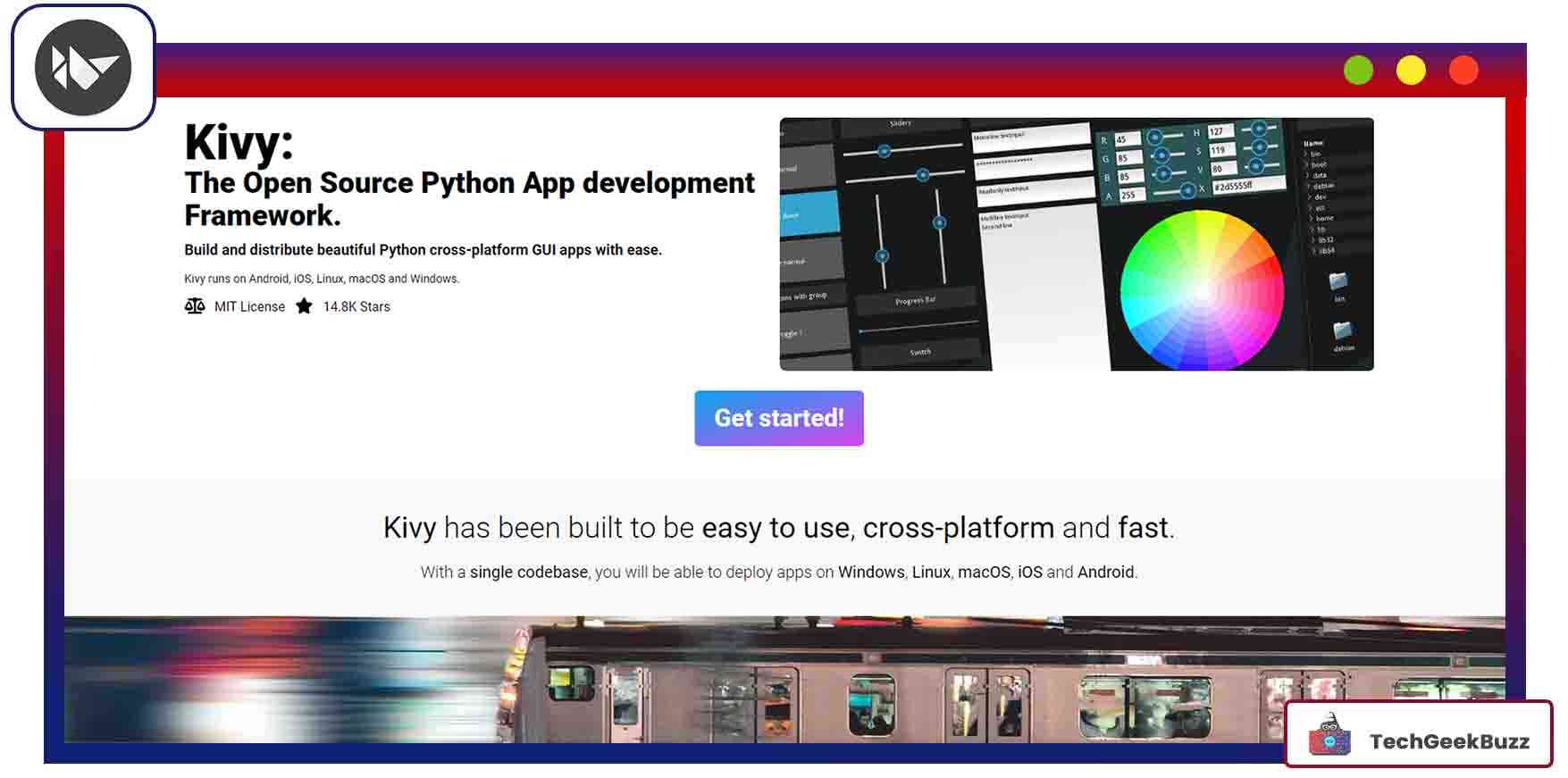
The most powerful Python GUI framework, Kivy, is open-source and free. Hence, you can download it for free and build any software application. Being cross-platform, Kivy allows developers to create applications that run on multiple platforms, including Android, iOS, GNU/Linux, Windows, and macOS.
Among all, it is well-known for building Android applications. Also, it is capable of building Raspberry Pi software. Python and CPython form a base for Kivy. Its best feature is the support for multi-touch functionality, allowing developers to fully utilise the power of a device’s screen for input.
Furthermore, Kivy supports multiple types of input, including gestures. Hence, it is an excellent GUI framework for Python. However, it is not ideal for building complex user interfaces.
Kivy comes with the following features:
- Input support through the mouse, keyboard, TUIO, and OS-specific multitouch events.
- A graphic library that leverages OpenGL ES 2 that makes it possible to write code once and deploy it on different platforms.
- A variety of widgets supporting multitouch.
- An intermediate language (Kv) to design customisable widgets.
To make things even better, it boasts well-written documentation.
Getting Started with Kivy
There are certain prerequisites to installing Kivy on your system – Upgrading Python and pip installation.
pip install --upgrade pip setuptools virtualenv
The next step is to create an environment to install Kivy and its associated items. I have created a virtual environment – kivy_venv, as follows:
python -m virtualenv kivy_venv
Now, it’s time to activate the created environment.
source ./kivy_venv/bin/activate
Now, install Kivy with the kivy[base] command
pip install "kivy[base]"
Kivy Example
from kivy.app import App
from kivy.uix.button import Button
classMyApp(App):
defbuild(self):
return Button(text='TechGeekBuzz')
MyApp().run()
2. Tkinter
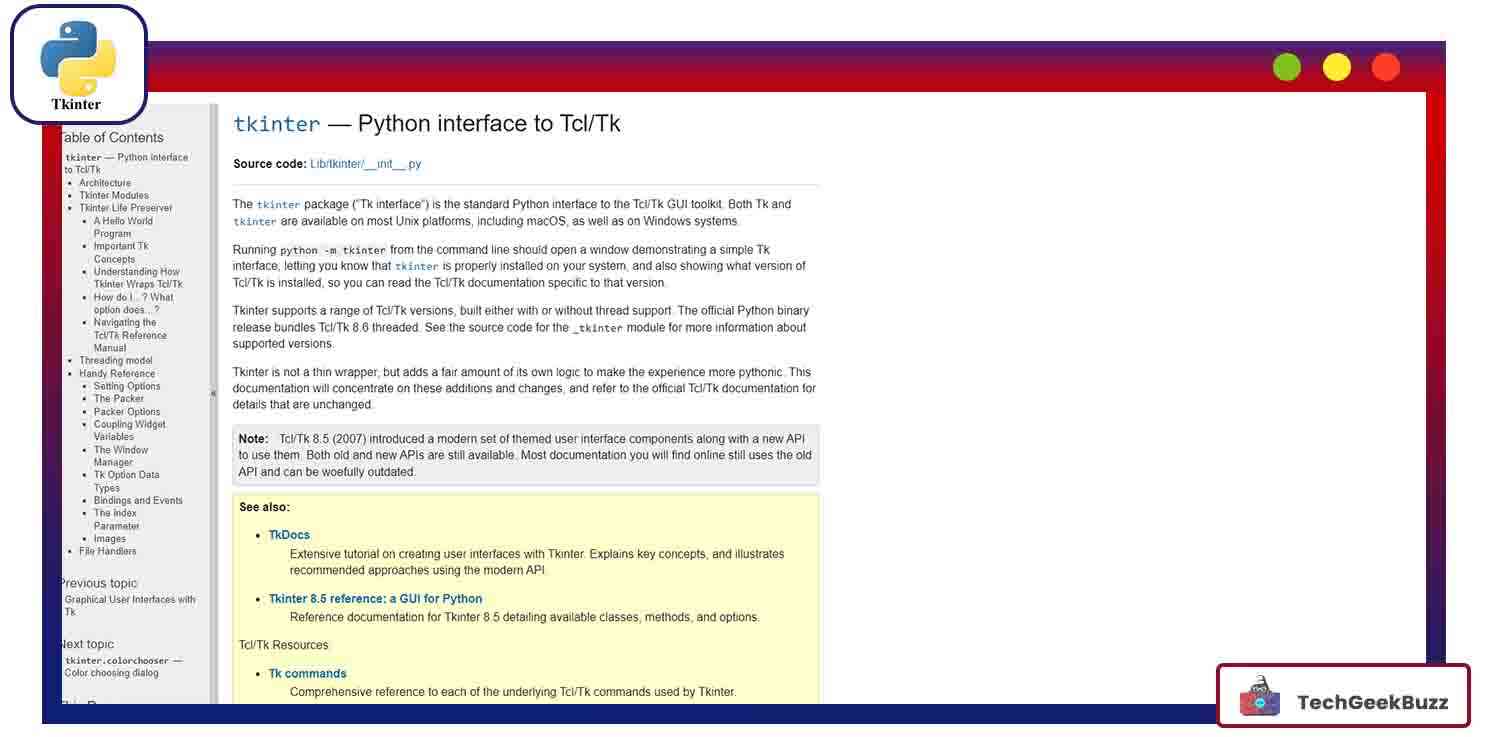
Tkinter, a go-to GUI toolkit, is among the developers' most preferred. It is a de facto Python GUI framework and provides an object-oriented interface to the Tk GUI toolkit. It comes pre-installed with the installation of Python on Windows, Linux, and macOS.
This framework is useful for the development of a variety of applications, such as desktop apps. Also, many Python data visualisation libraries use it to print graphs and charts. The applications you develop using Tkinter can run on any platform that supports Python.
Tkinter comes with a wide range of visual elements. Out of all, most of them are familiar to beginners and are referred to as widgets. A few visual elements familiar to beginners include
- Buttons
- Checkbuttons
- Frame
- Labels
- Canvas
- Message boxes
- Color-chooser
These visual elements or widgets make it easy to create cross-platform UIs.
Getting Started with Tkinter
You can install Tkinter using the following pip command:
pip install tkinter
Tkinter Example
import tkinter
window = tkinter.Tk()
window.title("TechGeekBuzz")
button = tkinter.Button(window, text='press', width= 20)
button.pack()
window.mainloop()
3. PyQT
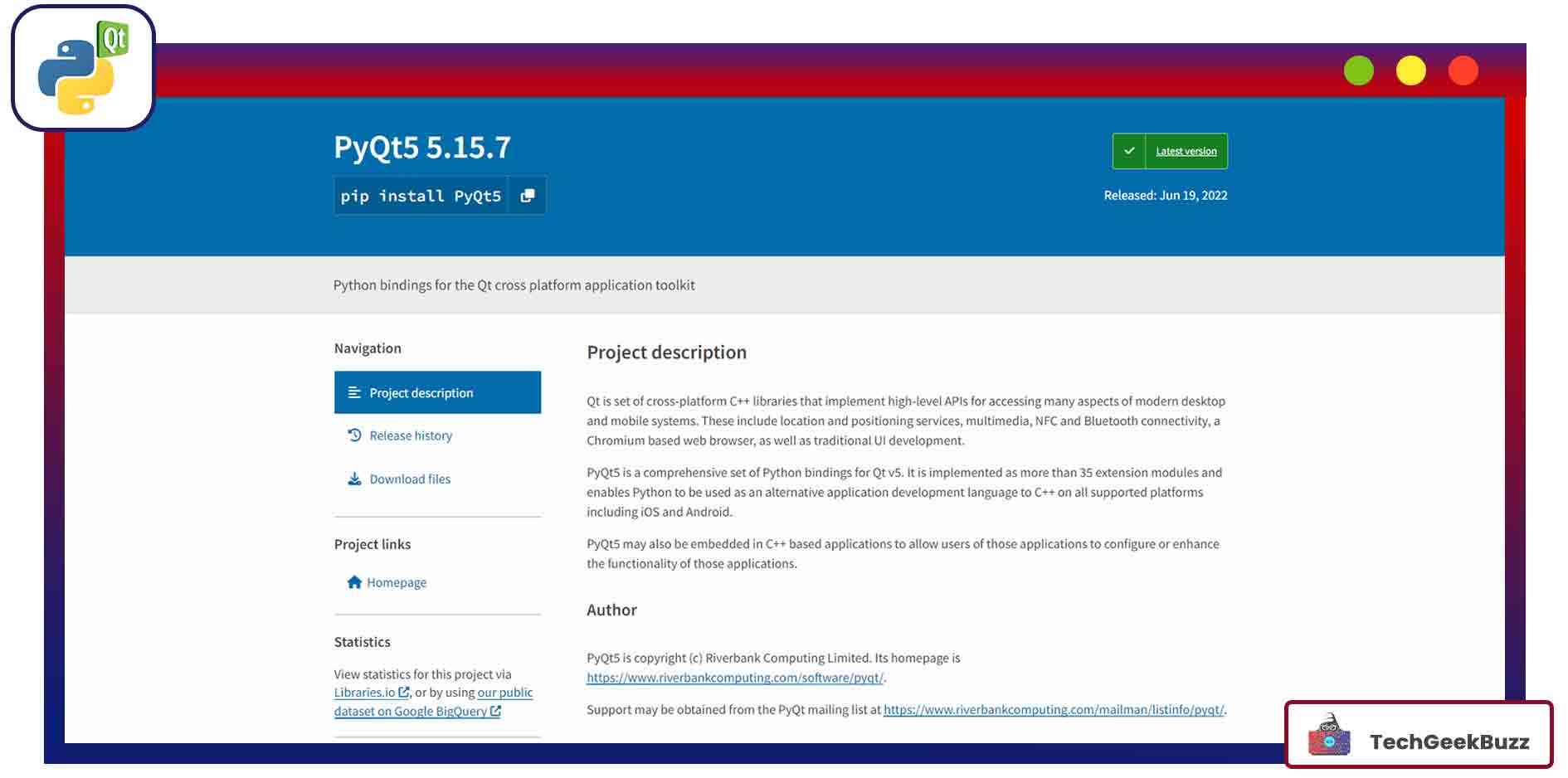
Built on top of the popular C++ GUI framework – Qt, PyQT is a popular and influential cross-platform Python graphical user interface library. So, developers can create applications for different platforms, including Android, iOS, macOS, Windows, and Linux.
Basically, PyQt is a library and not a framework. Nonetheless, with the help of this library, we can build user interfaces for applications. So, it has its place in the list of frameworks.
The latest version of PyQT is PyQt5, which includes all the required Python bindings based on version 5 of the Qt framework. You get two options to build user interfaces with PyQt:
- Qt widgets API for creating desktop applications.
- A declarative API called Qt Quick/QML to create touch interfaces for microcontrollers and devices.
QtGui and QtDesigner Modules provide many visual elements that developers can use by simply dragging and dropping them on their workspace. In addition, developers can create these visual elements through code.
So, PyQt helps you create user interfaces for small and large-scale applications and supports code reusability.
Getting Started with PyQt
Install PyQt using the following pip command:
pip install PyQt5
PyQt Example
from PyQt5.QtWidgets import QApplication, QLabel
my_app = QApplication([])
label = QLabel('Hello World TechGeekBuzz!')
label.show()
label.show()
4. PyGame
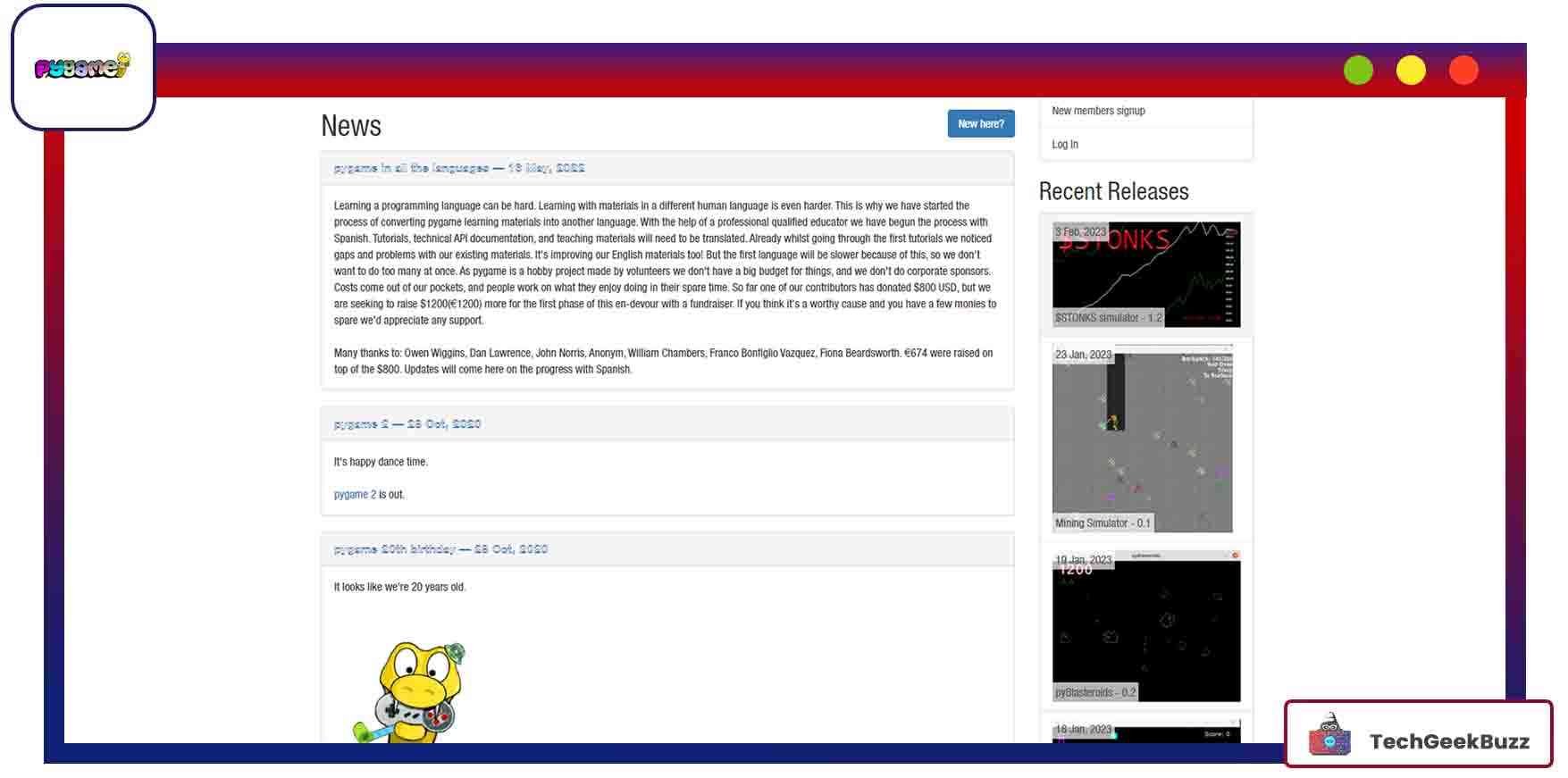
As its name suggests, PyGame, a well-known library, is packed with robust Python modules for developing cross-platform video games. It has many built-in graphical and sound libraries that help developers build interactive and powerful video games. Besides video games, PyGame supports the development of desktop-based GUI applications.
Moreover, it uses the Simple DirectMedia Layer (SDL) library. This library enables developers to create real-time computer games without worrying about C’s low-level mechanics and derivatives. SDL provides some common features: collision detection, vector maths, MIDI support, free-type font support, drawing, and pixel-array manipulation.
PyGame Subset for Android (PGS4A) supports PyGame-based applications and games on Android mobile phones and tablets.
However, it is essential to note that this library is not ideal for graphic designers, as it requires a basic understanding of Python. The library has made it possible to create video games without heavy graphical software.
A few popular games developed using PyGame are Frets on Fire, Dangerous High School Girls in Trouble, Save the Date, IndieCade 2013 Finalist, and Drawn Down Abyss.
Getting Started with PyGame
Use the following command to install PyGame using pip:
pip install pygame
PyGame Example
import pygame
window= pygame.display.set_mode((500,400))
done = False
whilenot done:
for event in pygame.event.get():
if event.type == pygame.QUIT:
done = True
#red window background
window.fill((255, 0, 0))
# green circle
pygame.draw.circle(window, (0, 255, 0), (250, 250), 75)
pygame.display.flip()
5. wxPython
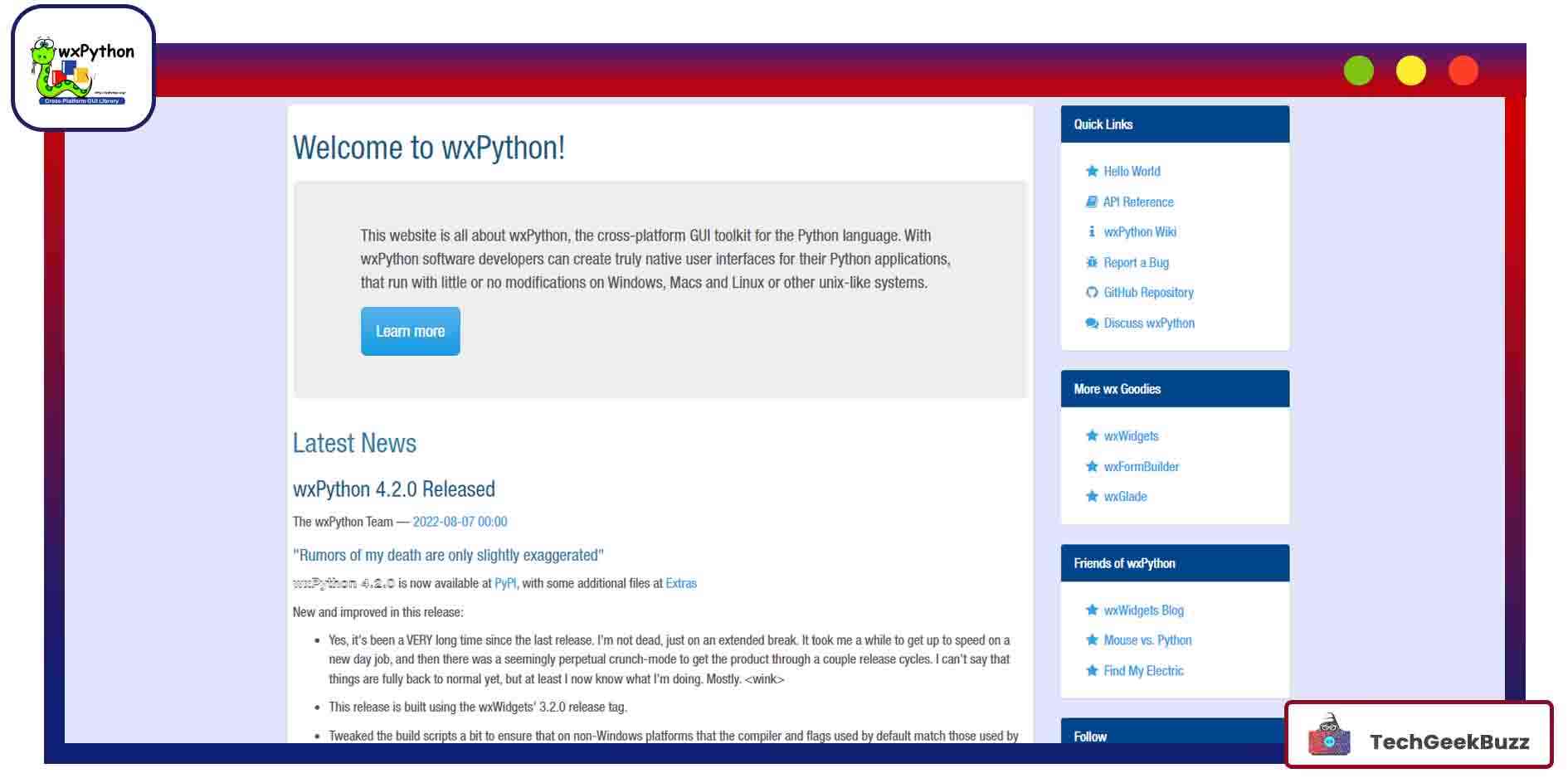
It is a cross-platform, open-source Python GUI API or toolkit. It allows you to build interactive and robust cross-platform GUI applications. The latest version of wxPython is 4.2.0. It is a Python extension module serving as a wrapper for wxWidgets, a cross-platform graphical user interface library.
wxPython is a top alternative to Python’s de facto standard GUI toolkit – Tkinter. It allows developers to create native interfaces without overloading applications. With just a single codebase (with little changes in some cases), this toolkit supports the development of UIs for Unix-based, Windows, Linux, and macOS platforms.
The successor of wxPython, Project Phoenix, provides support for Python 3. This successor was built from scratch to provide users with a clean Python implementation of wxWidgets.
Getting Started with wxPython
Use the following pip install command to install wxPython:
pip install wxPython
wxPython Example
import wx
my_app = wx.App(False)
window = wx.Frame(None, title="TechGeekBuzz! Hello World")
window.Show(True)
my_app.MainLoop()
6 . PyGUI
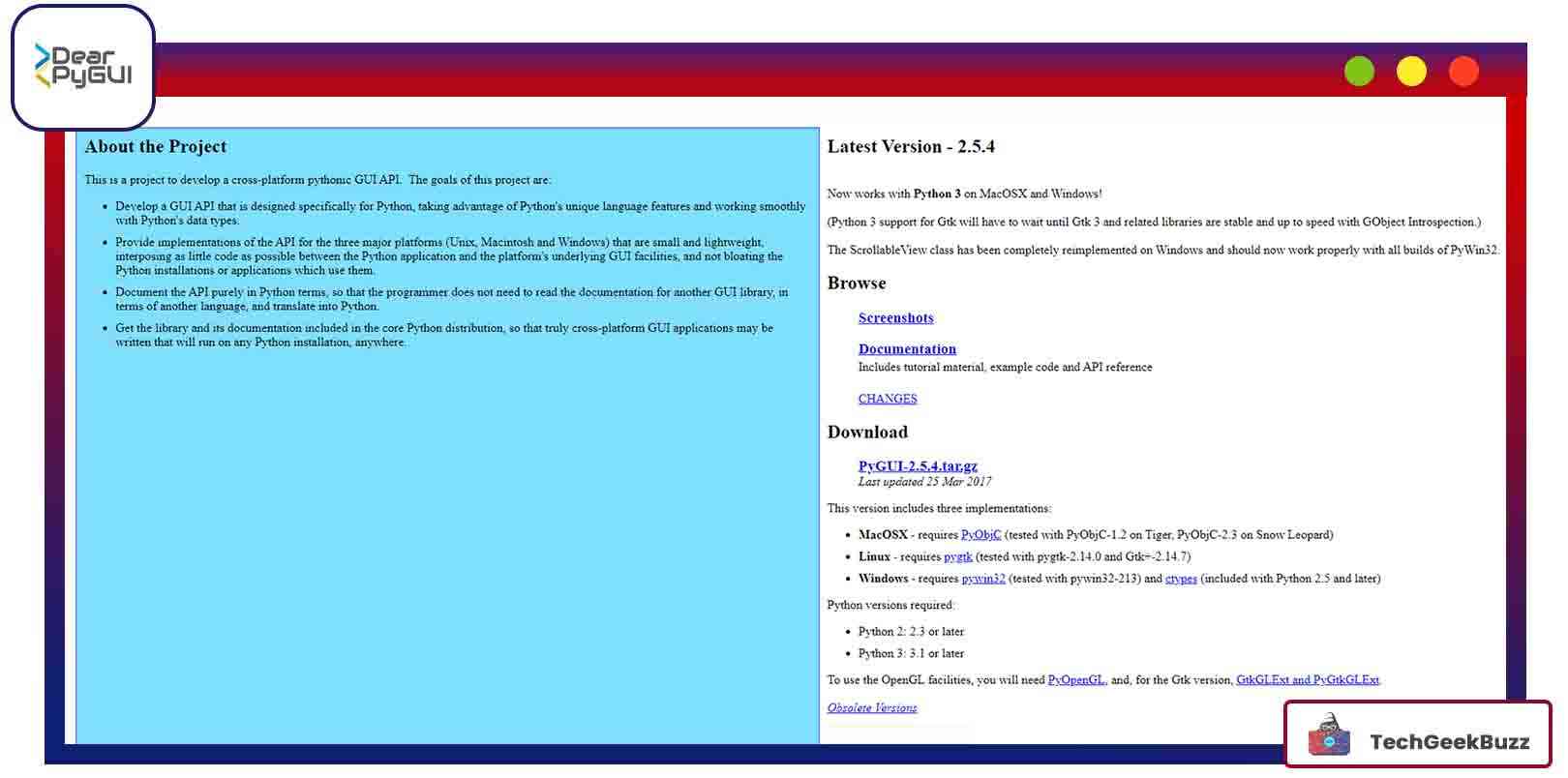
Also popular as the Python GUI Project, PyGUI is one of the simplest and most lightweight toolkits for creating cross-platform GUI applications. These applications are compatible with Unix-based, Windows, Linux, and macOS. Also, it allows developers to create UIs using native elements.
Moreover, the toolkit provides comprehensive documentation to help beginners understand and learn quickly about using it. It supports both Python 2.x and 3.x, and with the help of extensions, it supports the use of OpenGL and GTK.
A few popular features of PyGUI include high performance, stable operations, modern theme control and style, a node editor, and many developer tools. As it is a highly lightweight API, it requires little additional code between the Python program and the target platform.
Getting Started with PyGUI
Use the following command to install PyGUI.
pip install dearpygui
7. PyForms
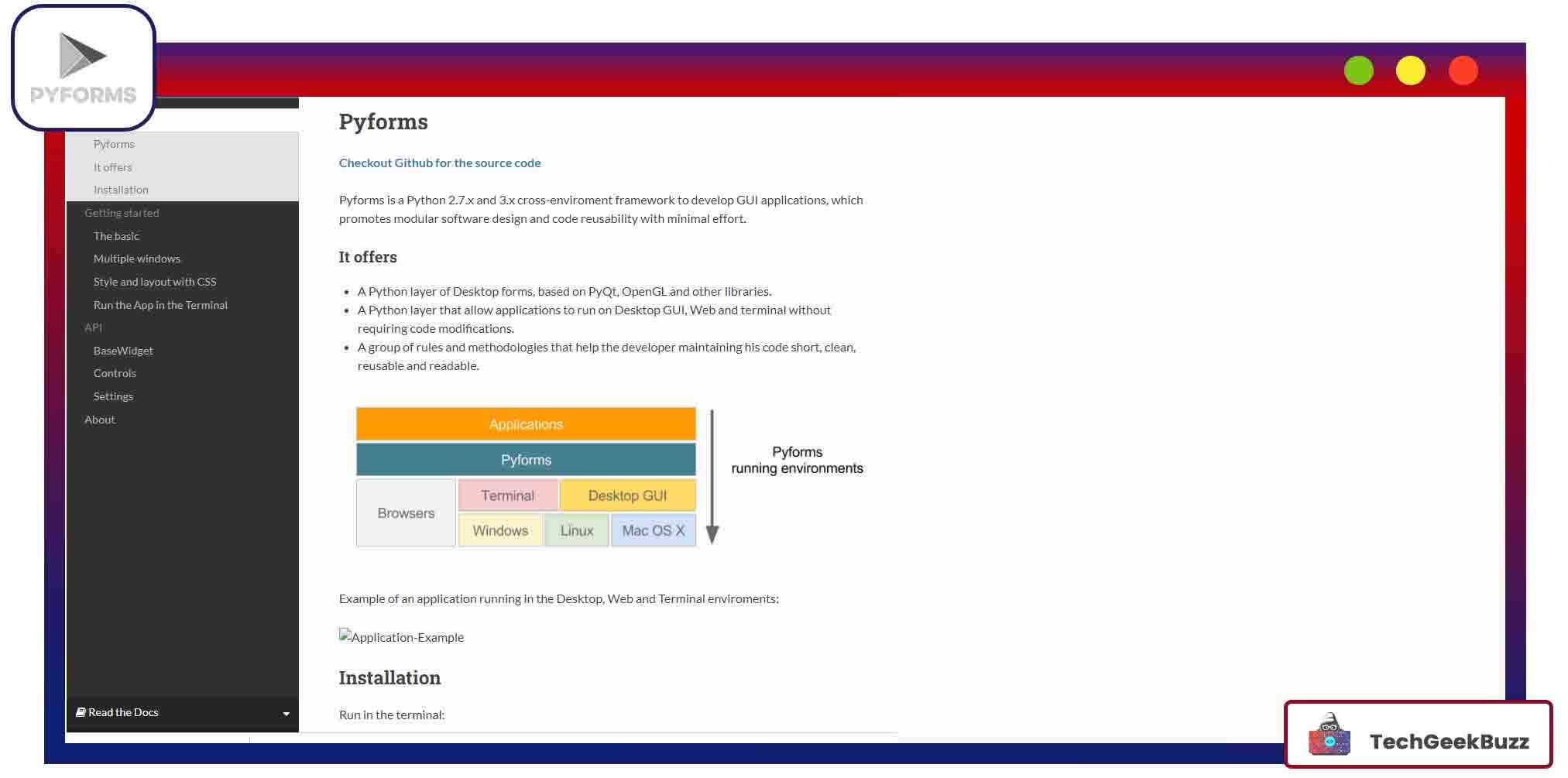
It is a cross-platform, open-source framework that supports Python 2.x and 3.x to create GUI applications, whether for desktop, mobile, or web. It emphasises code reusability and modular software design.
Furthermore, PyForms offers a variety of visual elements, including buttons, radio buttons, checkboxes, input fields, and labels.
The framework provides the following:
- Desktop forms based on PyQt, OpenGL, and others.
- A Python layer that enables applications to run on a desktop graphical user interface, the web, and the terminal without needing code adjustments.
- A set of guidelines and best practices that aid the developer in keeping his code readable, reusable, and concise.
Getting Started with PyForms
The following command helps you install PyForms on your system:
pip install pyforms-gui
8. PySimpleGUI
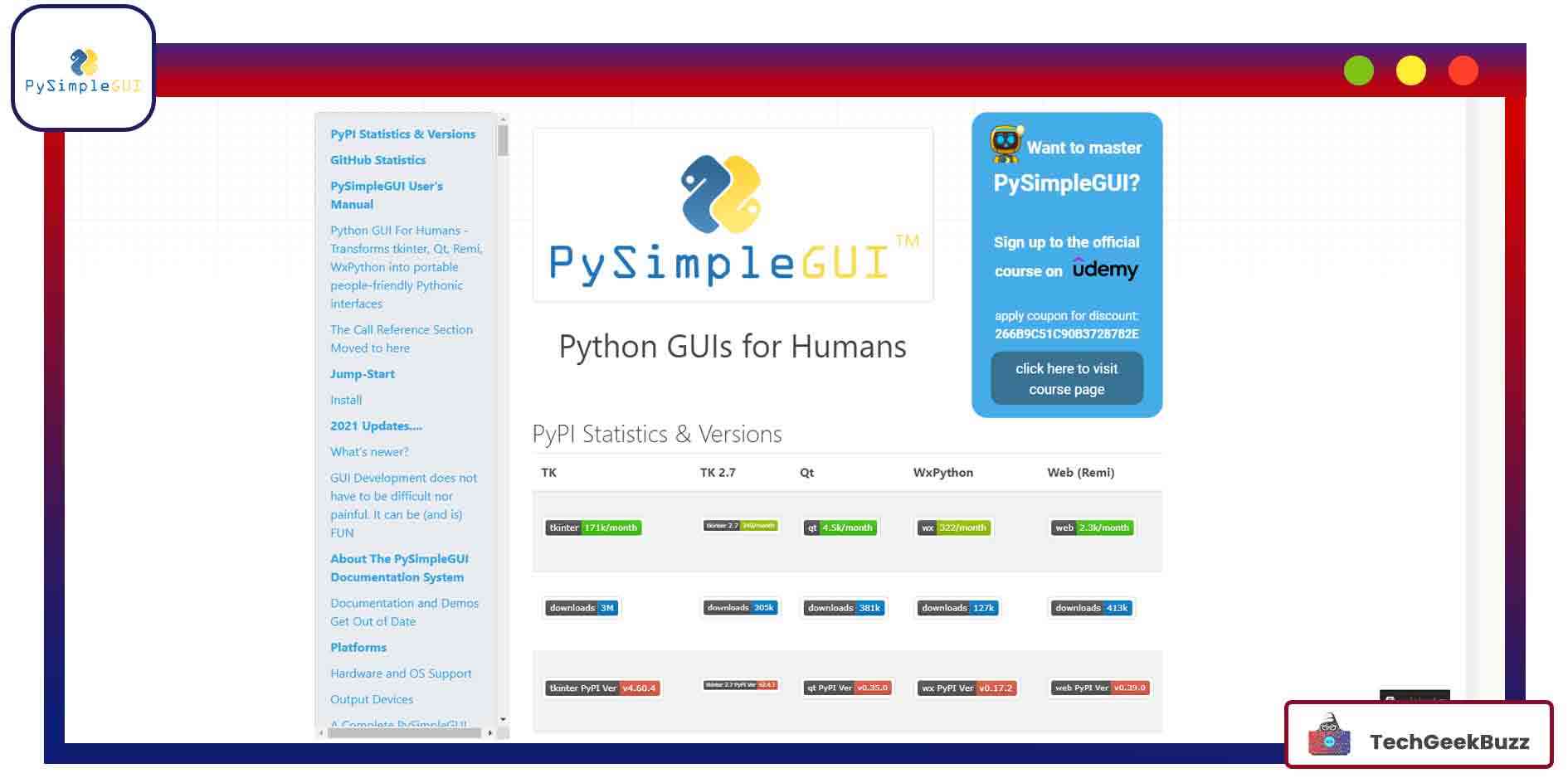
PySimpleGUI is the simplest Python GUI framework aimed at beginners. This project has four pillars:
- The core software
- The extensive documentation, cookbook, call reference, and built-in documentation via docstrings
- 300+ Demo Programs to give you an immediate jump start on your project.
- Free customer support
It takes four other popular frameworks – Qt, Tkinter, WxPython, and Remi- into a single interface. Though the default library is Tkinter, you switch between the others available anytime.
PySimpleGUI simplifies the creation of UIs by eliminating the difficulties of the frameworks mentioned above. Since it has a lower learning curve, you can completely focus on developing the core logic.
Moreover, the framework provides access to various visual elements, allowing you to create UIs easily and quickly.
Getting Started with PySimpleGUI
Install PySimpleGUI with the following command:
pip install pysimplegui
9. Libavg
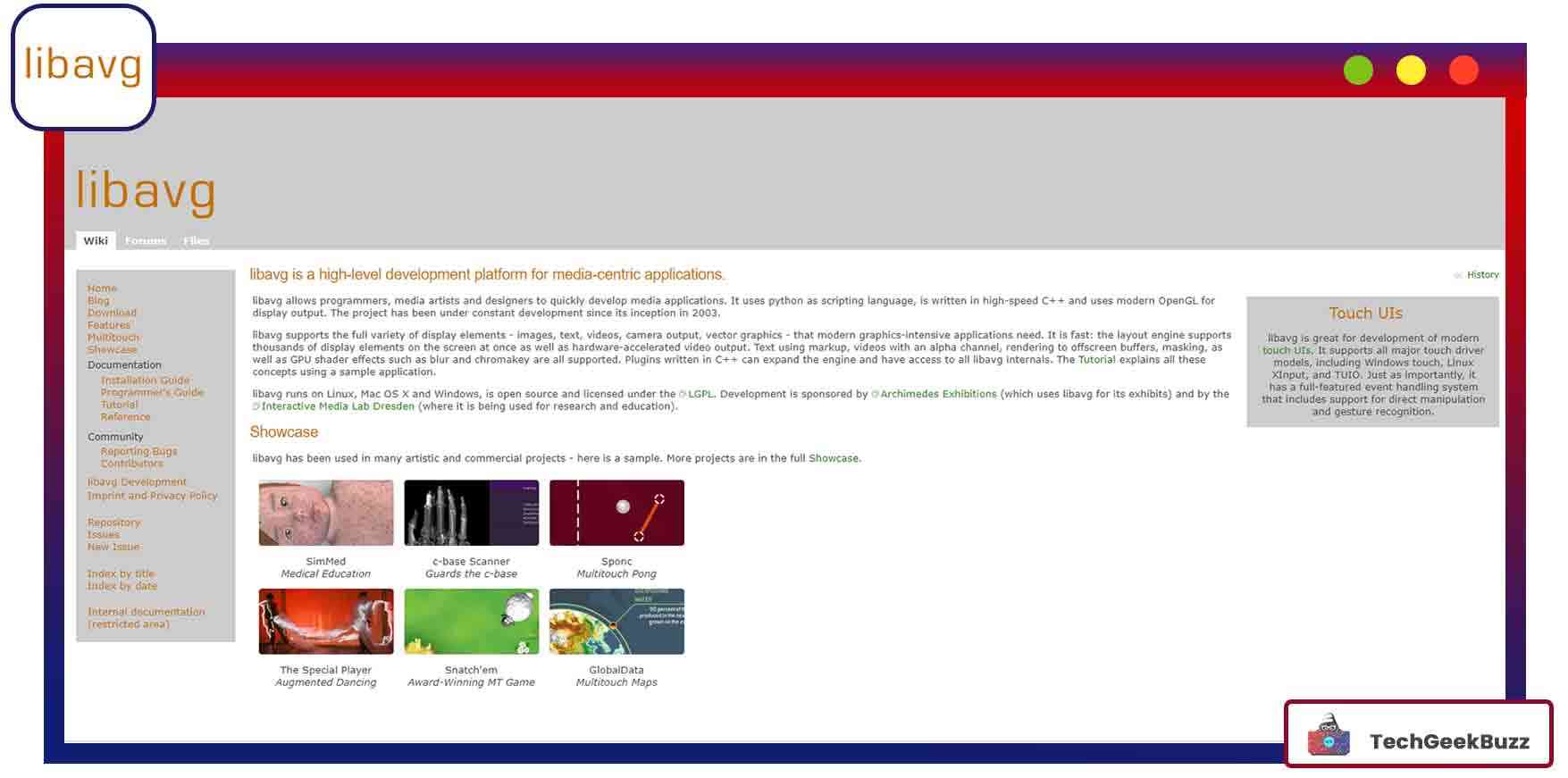
It is a free and open-source GUI framework developed in C++. Libavg is a perfect solution for creating user interfaces for modern touch-based devices. Developers, designers, and artists can use it to create media applications within less time. As it is developed in C++, you can ensure the fast execution of applications you develop using Libavg.
Libavg is excellent for multi-touch development. It supports Win7 Touch, Linux Drivers, TUIO, the Apple Multitouch Trackpad, and all major driver models. Additionally, it comes with its own tracker for optical FTIR and DI devices.
A few popular features of Libavg include animation support, text alignment, GPU effects, camera support, and many others. The advanced screen layout engine makes it possible to implement various manipulation techniques, including rotation, scaling, cropping, and blending modes, for visual elements.
Moreover, OpenGL facilitates hardware-accelerated graphics processing, and GPU Shaders speeds up other critical aspects, including video decoding, compositing, and visual effects.
Getting Started with Libavg
Check out the installation guide for different platforms here .
10. Wax

Wax is a wrapper of wxPython. This GUI framework is a Python extension module, like other popular frameworks.
It supports creating UIs for cross-platform applications. Its goal is to provide application developers with a more straightforward interface for using Python to build user interfaces by removing the low-level wxPython features.
The underlying wxWindows platform is incredibly fast and efficient, and the wax GUI framework benefits from the same degree of speed and efficiency when using the platform's native widgets.
Getting Started with Wax
Using the following command, you can install Wax:
pip install python-wax
11. PySide
PySide is the official Python bindings project for Qt. It allows developers to access the complete Qt 4.8 framework and generator tools to create bindings for any C++ libraries . It is among the best alternatives for Python’s standard GUI library - Tkinter.
This free Python binding library supports macOS, Microsoft Windows, and Linux. It features a binding generator called Shiboken. Creating bindings using Shiboken results in the reduced size of binaries and minimal memory footprint.
Currently, PySide supports Python 2.6 and above and Qt 4.6 and above but not Qt 5.x. It comes in handy to help you access all Qt libraries in a more natural way.
Getting Started with PySide
pip install -U PySide
12. PyGObject
If you are using GTK (a cross-platform widget toolkit for creating user interfaces) to create an application for GNOME or a Python GUI application, PyGObject is a go-to option. It is a Python package offering bindings for GTK and other GObject-based libraries, like GStreamer, WebKitGTK, GLib, GIO.
PyGObject is compatible with Python 3.8+ and PyPy3 and Windows and macOS operating systems. It dynamically provides a Python interface based on the metadata from the typelib file and by accessing the C library (libgtk-4.so) using GObject-based libraries.
You can create modern, adaptive, intuitive interfaces that comply with GNOME's Human Interface Guidelines (HIG).
Totem, Matlplotlib, gedit, and beets are libraries and applications that leverage PyGObject.
Getting Started with PyGObject
pip install PyGObject
13. Pycairo
Pycairo provides Python bindings for the Cairo graphics library, a 2D graphics library supporting several output devices. It works well with Python 3.7+ and PyPy3. Pycairo bindings match closely with Cairo C API.
Furthermore, this module provides an object-oriented interface to Cairo. It provides a C API that other Python extensions use extensively. It queries an object’s error status and translates it into exceptions.
Getting Started with Pycairo
pip install pycairo
Conclusion
Here ends our list of the best Python GUI frameworks. Almost all are open-source, easily accessible, and simple to set up. Also, they are beginner-friendly with a low learning curve.
Though a few are libraries, they function similarly to a framework. Hence, we have placed them in the list of GUI frameworks for Python. They will help you create intuitive and excellent user interfaces for your applications.
If you want to add any other framework to this list, do let me know in the comments.
Good Luck!
People are also reading:
- How to use split in Python?
- Invalid Syntax Python
- How to update all Python Packages?
- Python Absolute Value
- How to loop with indexes in Python?
- Python Round to Whole Numbers
- How to Import an Excel File into Python using Pandas?
- Python Sort a Dictionary
- How to Install Python 3 on Ubuntu 18.04 or 20.04
- Print without newline in Python
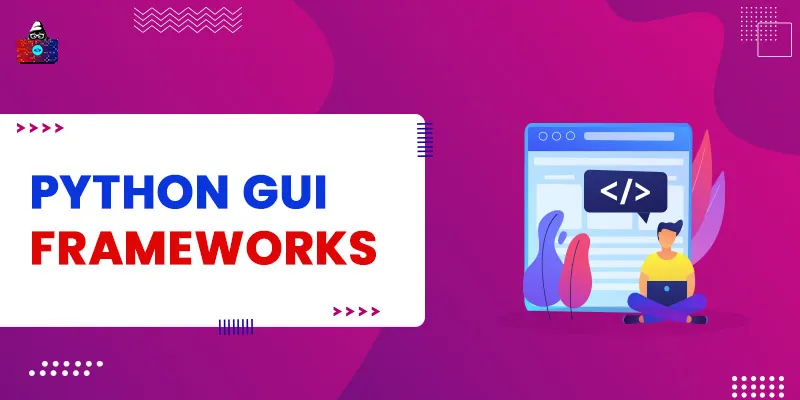

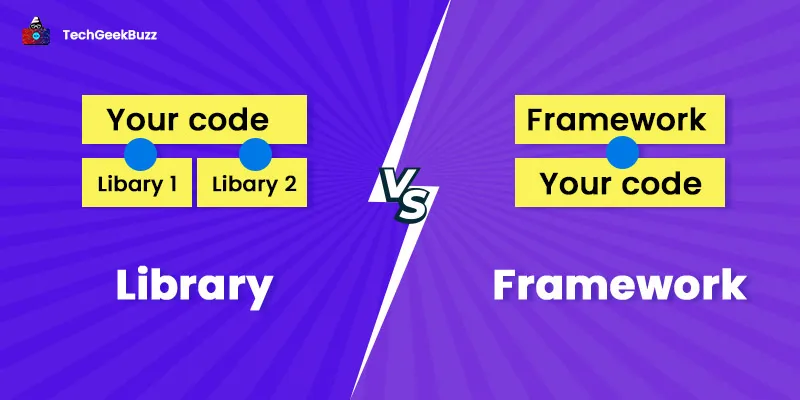
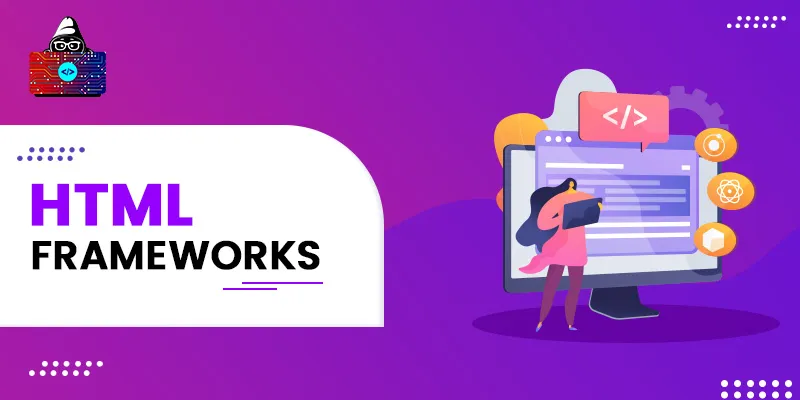
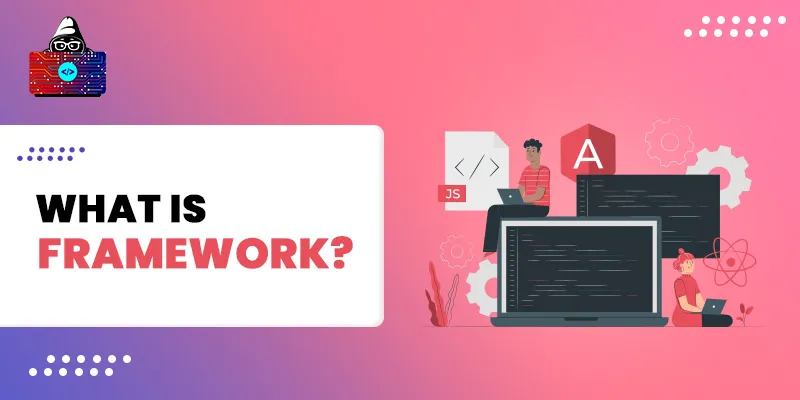
Leave a Comment on this Post